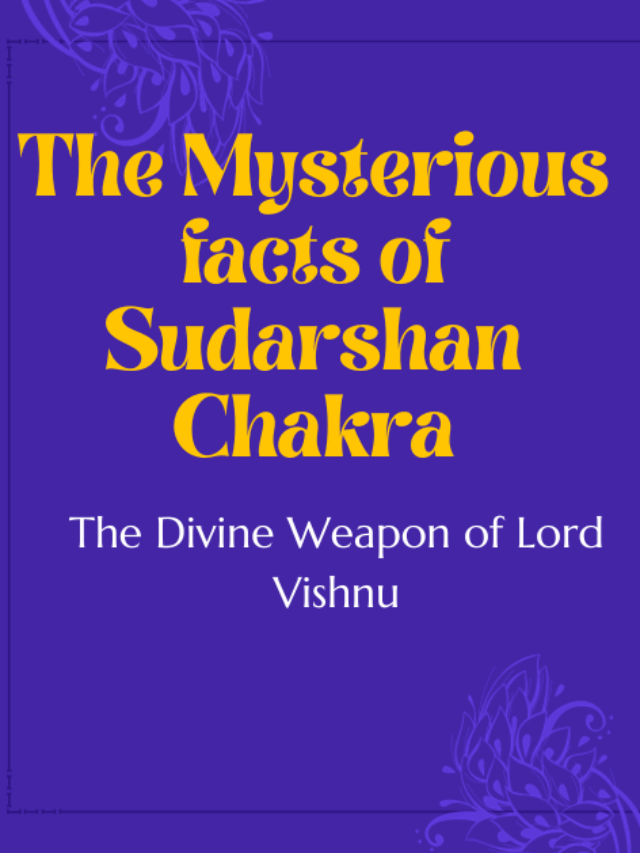Sudarshan Chakra, (सुदर्शन चक्र) considered to be the most powerful weapon in Hindu mythology is most often seen in the rear right hand of the four hands of Lord Vishnu, who also holds a Shankh meaning (conch shell) a Gada meaning (Mace) and a Padma which is a lotus. It is a spinning disc-like weapon having 10 million spikes in two rows moving in the opposite directions to give it a serrated edge.
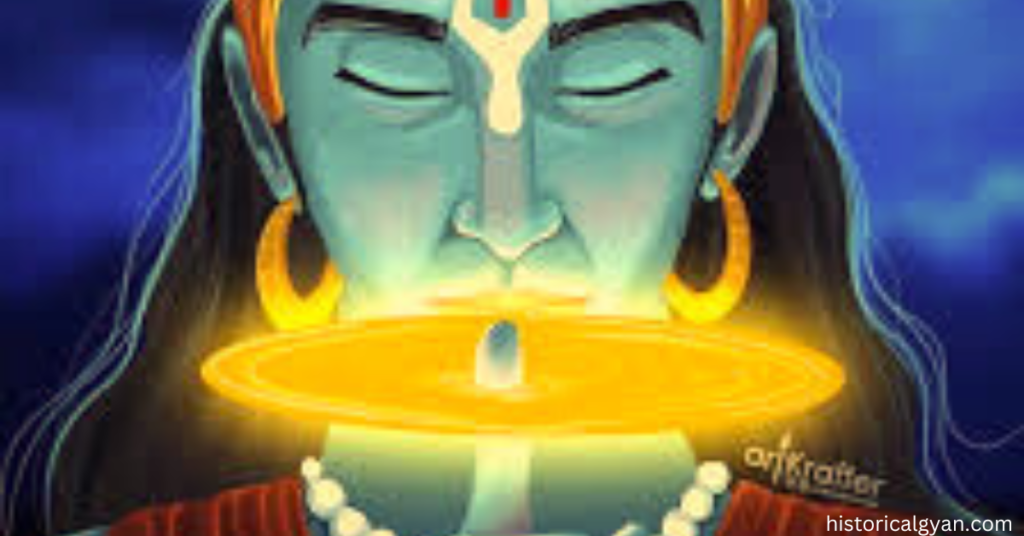
The Rigveda: The Dawn of Sudarshan Chakra
The Sudarshan Chakra’s roots trace back to the Rigveda, where it symbolized Vishnu’s role as the wheel of time, a cosmic force shaping destiny and existence. As time unfolded, the Sudarshan Chakra metamorphosed into a potent ‘Ayudapurusha,’ a fierce embodiment of Vishnu’s power, a weapon forged for the obliteration of adversaries. The name Sudarshan itself carries profound meaning, translating to ‘Auspicious Vision,’ while ‘Chakra’ signifies ‘disc’ or ‘wheel.’ In the puranas, this divine weapon assumes even greater significance.
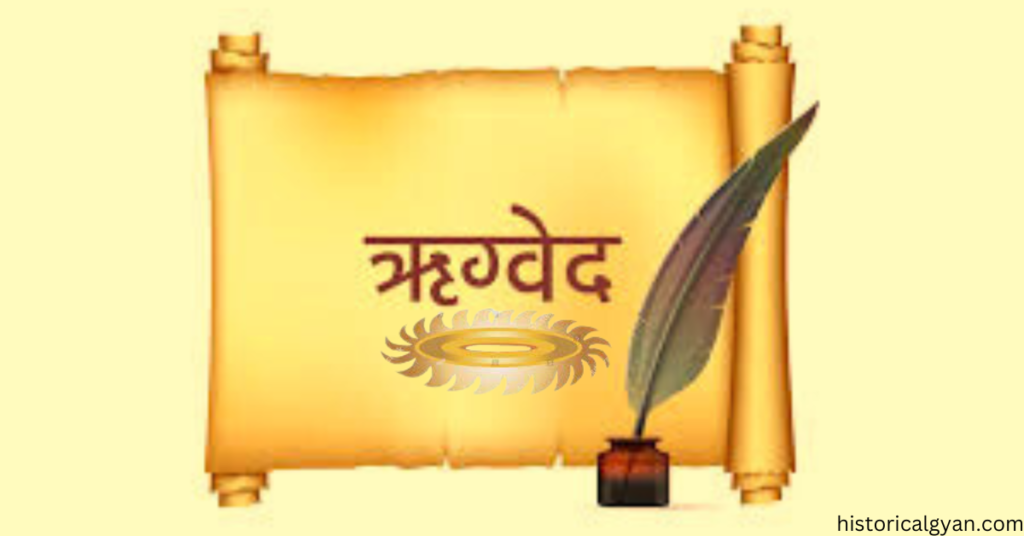
Sudarshan Chakra literally means: “one whose vision is auspicious.”: Origins of Sudarshan Chakra
The Sudarshan Chakra derives its name from two Sanskrit words: “Su” meaning ‘auspicious’ and “Darshan” meaning ‘vision.’ The term ‘Chakra’ finds its roots in ‘chruhu,’ meaning ‘movement,’ and ‘kruhu,’ meaning ‘to do.’ Therefore, Sudarshan Chakra collectively embodies the concept of ‘auspicious vision that is mobile.’ The tale behind its creation is as intriguing as the weapon itself.
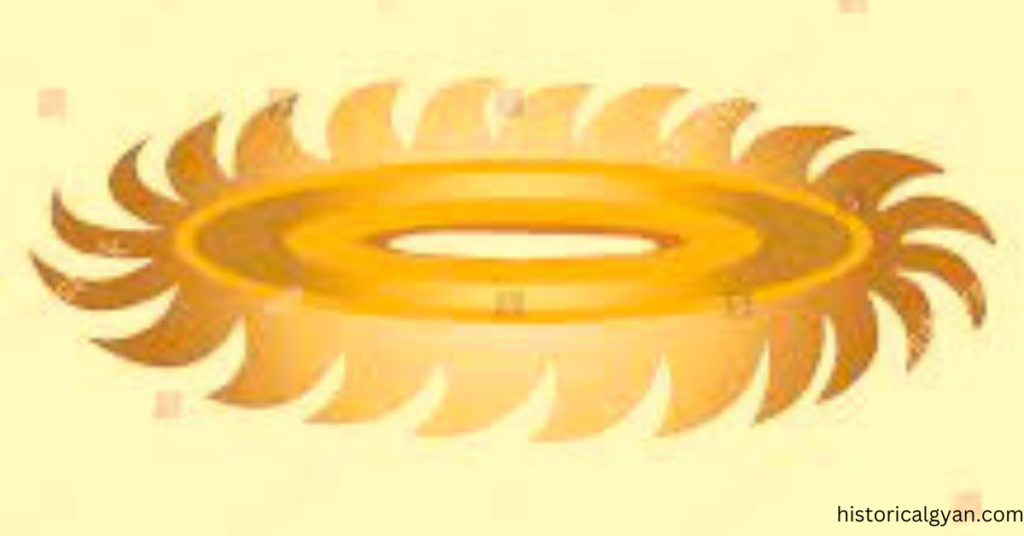
Properties and powers of Sudarshan Chakra:
- Return to the Wielder: Once unleashed, the Sudarshan Chakra’s destructive force annihilates the enemy, only to return promptly to the one who wields it.
- Absolute Control: Even in the throes of battle, the Sudarshan Chakra remains obedient to its master’s will, following every command with unwavering precision.
- Swift Travel: The Chakra chooses the Shunyamarga, the path of zero stress nature, enabling it to traverse vast distances in the blink of an eye.
- Hansagati: When confronted with obstacles, the Sudarshan Chakra accelerates, effortlessly surmounting hindrances in its path.
- Silent Fury: This celestial weapon operates in eerie silence, striking terror into the hearts of adversaries.
- Destructive Power: Its potency knows no bounds, capable of annihilating even the most formidable of foes.
Structure of Sudarshan Chakra:
The Sudarshan Chakra has a special design:
- It has twelve spokes, like the lines coming out from the center.
- In the middle, there’s something called the “Vajra.”
- Each of the twelve spokes has the words “Om Sahasrar Hum Phat” written on them.
- These twelve spokes are believed to stand for the twelve months in the Hindu lunar calendar and also for twelve gods like Soma, Indra, Varuna, and others.
- There are six points in the middle, and they represent the six different seasons.
Sudarshan Mantra
The Sudarshan Chakra is revered through the chanting of the Sudarshan Mantra:
"ॐ सुदर्शन महाज्वाल कोटीसूर्य समप्रभ ।
अज्ञानं तस्यमे देव विष्णोर्मार्गम् प्रदर्शय॥"
“Om Sudarśana mahājvāla koṭi sūrya Samaprabha |
Ajñānāndhasye me deva viṣṇor mārgaṃ pradarśaya ||”
The another Mantra in Sanskrit:
“ओम सुदर्शनाय विद्महे महा ज्वालाय धीमहि तन्नो चक्रं प्रचोदयात्।”
“Om Sudarshanaya Vidmahe Maha Jwalaya Dhimahi
Tanno Chakrah Prachodayat.”
This mantra is a powerful invocation of the Sudarshan Chakra’s divine energy.
Story of Sudarshana Chakra: 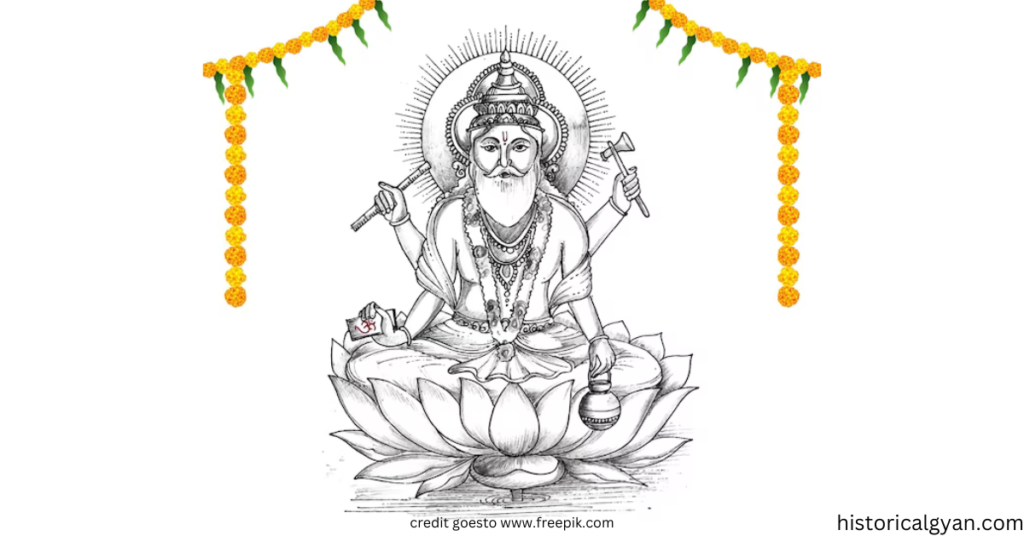
The creation of Sudarshan Chakra is attributed to none other than Vishwakarma, the divine architect of the gods, famous for his peerless craftsmanship. According to Hindu mythology, Vishwakarma’s daughter Sanjana was married to the brilliant Lord Surya. However, due to her husband’s intense talent and scorching heat, it was impossible for Sanjana to approach him. Troubled by his plight, he spoke about it to his father, Vishwakarma.
Responding to his daughter’s plea, Vishwakarma extracted a portion of the Sun’s radiant energy, reducing its brightness to a tolerable level. The remaining energy and dust was collected by Vishwakarma and formed into three extraordinary divine objects,
- The first aerial vehicle was the Pushpak Vimana.
- The second was Trishul and
- The third was Sudarshan Chakra
Lord Shiva gives Sudarshan Chakra to Lord Vishnu
It is said that Vishwakarma gifted all of these three objects to Lord Shiva. which is obvious considering the fact that Lord Shiva is known as a god of destruction. Later, Shiva gifted the Pushpak Vimana to Ravana’s brother and the Sudarsana Chakra to Vishnu.
How did Lord Vishnu get Sudarshan Chakra?
One tale, When Lord Vishnu went to Lord Shiva, he tracked down him in profound contemplation and didn’t have any desire to upset him. So he began worshiping God.
Lord Vishnu used to pray to Lord Shiva, meditate on him, and fervently chant his name every day for many years. This went on for such a long time but Shiva stayed unmoving in his reflective daze. Lord Vishnu was powerless! The gods continued to be mercilessly tortured by the demons and it seemed that they would not be able to save them.
Then he chose to escalate his devotion. They chose to offer him 1,000 lotus blossoms while reciting 1,000 names of Shiva.

Subsequent to making every one of his arrangements, Vishnu began worshiping Shiva with most extreme commitment. They chanted the name of Shiva and presented lotus flowers one by one.
At the point when he arrived at the end, he understood that one bloom was absent. He counted just 999. He had to go find another lotus because of this. He immediately considered removing one of his eyes and giving it to Shiva rather than doing so. Because the eyes of Lord Vishnu are considered as beautiful as lotus, hence they are also called Kamalanayana and Pundarikaksha.
As he was going to do as such, Lord Shiva appeared up before him, kept him from removing his eyes and said, “I will satisfy your desire.”
Vishnu said, “Kindly give me something that will assist me with vanquishing the evil presences.”
The reply from Shivaji was, “I give you this chakra.” With this you will be able to defeat every opponent. No matter how many demons come to attack you and various gods, you will be able to overcome them all.
After getting The Sudarshan Chakra, Lord Vishnu had the choice to beat the evil presences and save the gods beings.
There are several Puranic stories associated with the Sudarshan Chakra.
The Sudarshan Chakra finds itself entwined in several captivating tales from Hindu mythology:
The Demise of Sati:
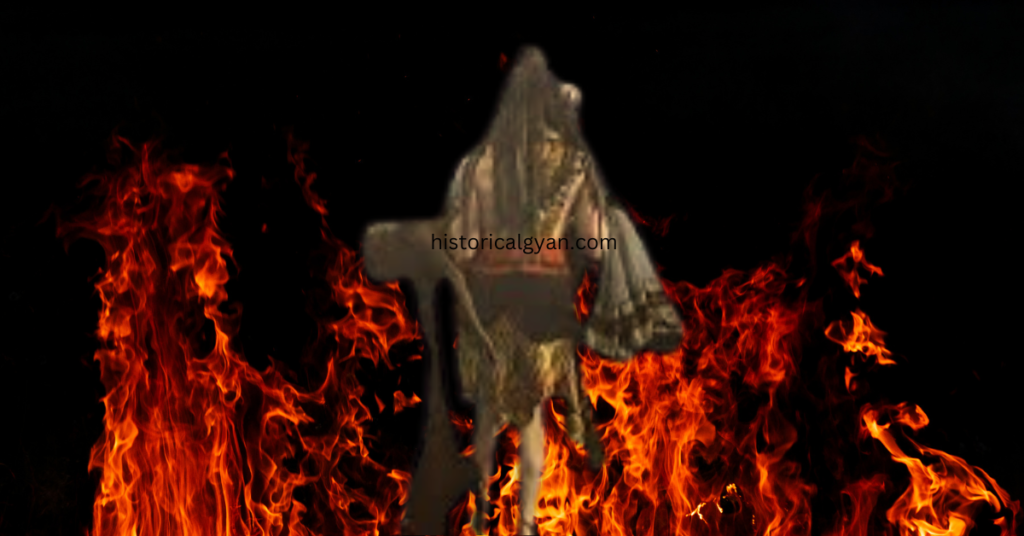
When goddess sati was unable to bear the insult of her husband of Lord Shiva from her father daksha she burnt herself to death by herself into the yagyakund or the sacrificial fire. Lord Shiva in grief carried around her lifeless body and was inconsolable. To detach lord shiva from the corpse of sati and to bring him back to his actual duties of the world, Lord vishnu used the Sudarsana chakra to destroy the corpse of sati. By the effect of this deadly weapon, her body was shed to 51 pieces and fell in different places. These places later came to be known as the ‘shaktipeeta’.
Samudra Manthan:

During the Samudra Manthan, Vishnu in his Mohini avatar used her discus to behead Rahu. The asura had disguised himself amongst the devas to consume the nectar of invincibility. Mohini saw through the disguise and attacked him but the asura had gulped the nectar. Due to the divine properties of the nectar, the beheaded body became a separate living entity called Ketu, and the head came to be known as Rahu.
Mahabharata: Shishupala’s Insult

During the epochal Mahabharata, When yudhisthira undertook the Rajasuya yajya, he sent Bhima his brother to acknowledge shishupa,l who was now the king after his father’s death. Shishupal accepted yudhisthira’s supremacy with no protest, and was invited to the final ceremony at indiraprastha. At the event the Pandavas decided that krishna would be their special guest of honor at the sacrificial ceremony. This angered shishupala and he started insulting krishna, calling him aere cowherd (gwala) and worthless to be honored as a king. In response, Lord Krishna invoked the Sudarshan Chakra, quelling the insolence and upholding justice.
King Ambarisha’s Boon
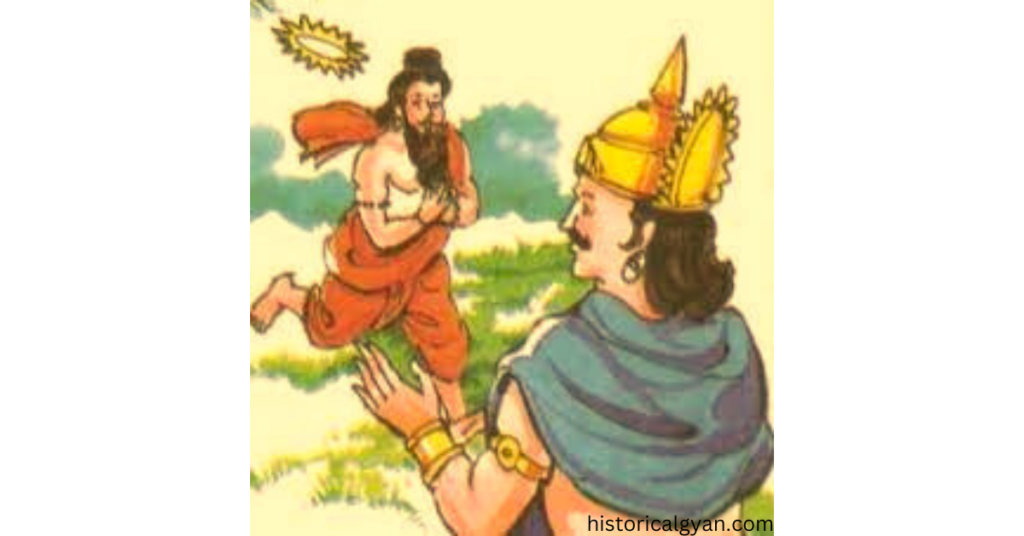
Once upon a time, King Ambarisha observed a sacred vow known as the Dvadashi vrath. This vow required him to start fasting on Ekadashi, the 11th day of the Hindu month, and break the fast at the beginning of Dwadashi, the 12th day of the month, by feeding all the people in his kingdom.
As the moment to end his fast approached, a respected sage named Durvasa arrived, and King Ambarisha welcomed him with great honor. Durvasa agreed to be the king’s honored guest but asked for some time to take a holy bath in the river before partaking in the meal.
However, when it was time for the king to break his fast as per his vow, Durvasa had not returned. Following the advice of Sage Vashishtha, King Ambarisha broke his fast by consuming a Tulsi leaf with water and waited for Durvasa to return so he could offer him food.
Durvasa, known for his quick temper, was furious because he felt that King Ambarisha had disrespected him by breaking the fast before serving him. In a fit of rage, Durvasa created a demon to attack King Ambarisha.
In this dire moment, Lord Vishnu’s Sudarshan Chakra immediately appeared, vanquishing the demon and pursuing Durvasa. Fleeing for his life, Durvasa sought refuge first with Lord Brahma and then with Lord Shiva, but both expressed their inability to protect him.
Desperate and pursued by the relentless Sudarshan Chakra, Durvasa turned to Lord Vishnu himself. However, Lord Vishnu explained that he couldn’t intervene because he had granted the Sudarshan Chakra to King Ambarisha as a symbol of prosperity and protection. The Sudarshan Chakra, as a result, would relentlessly pursue and defeat any enemy that threatened the king.
Lord Vishnu advised Durvasa that the only way out of this perilous situation was to seek forgiveness and protection from King Ambarisha himself. With no other choice, Durvasa approached King Ambarisha, humbly begged for his mercy, and expressed deep remorse for his actions.
King Ambarisha, displaying great compassion and forgiveness, accepted Durvasa’s apology and prayed to Lord Vishnu to recall the Sudarshan Chakra, thereby saving Durvasa’s life.
In Conclusion:
The Sudarshan Chakra, a divine disc of unparalleled power, weaves a mesmerizing narrative through the tapestry of Hindu mythology. Its creation, attributes, and exploits paint a vivid picture of its significance in preserving cosmic balance and vanquishing malevolence. It remains a symbol of auspicious vision in motion, a harbinger of justice and protection for the devout. In the annals of Hinduism, this celestial weapon stands as a testament to the enduring power of faith, devotion, and divine intervention.

